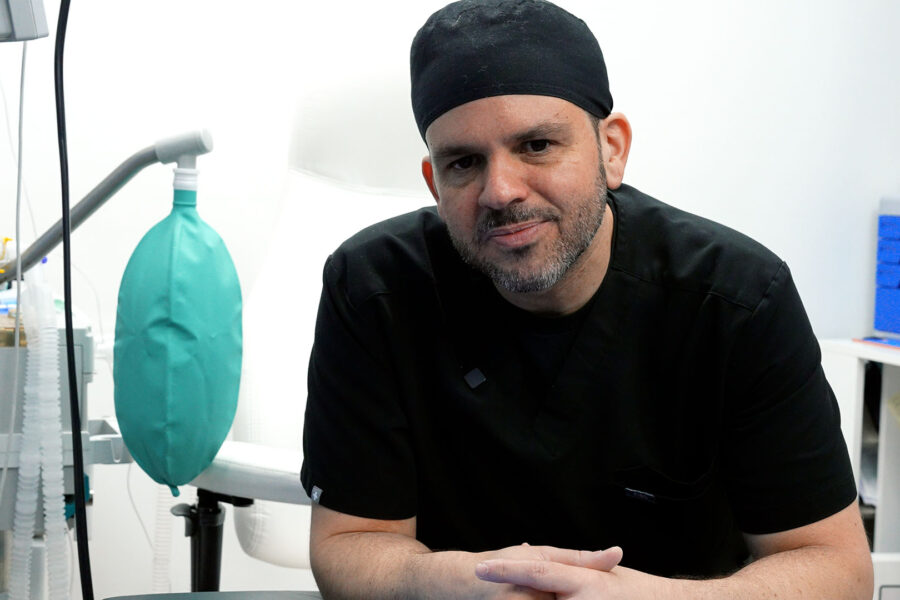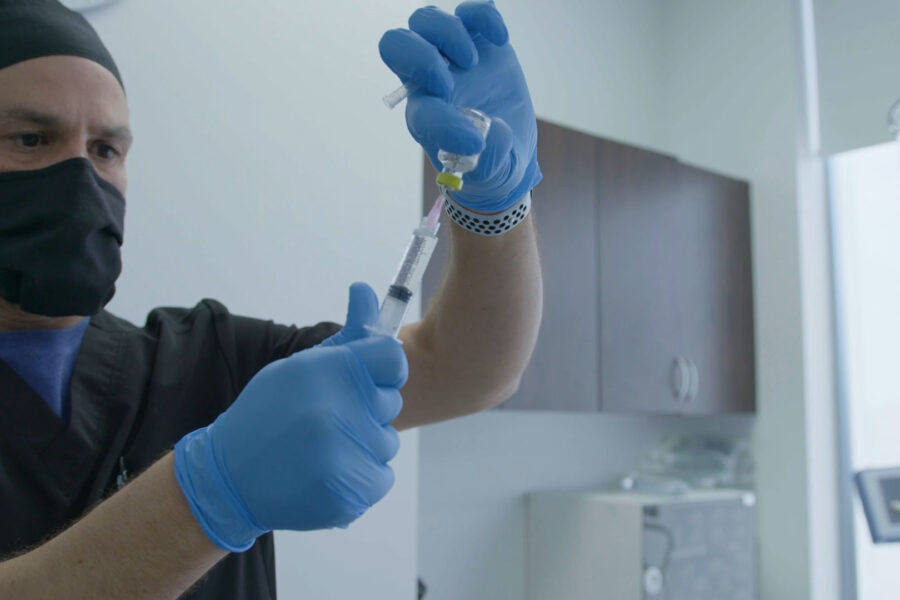If I had a nickel for every time someone expressed fears about anesthesia, I’d be a rich man. In fact, lots of people are more afraid of being put under than even undergoing the surgery. That’s why I thought it was so important for my anesthetist, Frankie Brina, CRNA, to join us on our Youtube web series Behind the Drapes.
Frankie is the best in the business. He’s put my wife to sleep, and I’d trust him with anything. He’s meticulous and safe, and having him as a part of my team gives me a sense of comfort that is easy to share with my patients.
While there are multiple types of anesthesia, general anesthesia is what I usually use.
Before Frankie even meets a patient, he’s looking over their charts. The chart have extensive information about every patient, and it helps determine the beginning dosage. However, patients are monitored the whole time and sedation is adjusted as the procedure moves along. The amount of anesthesia administered is unique to every person.
Before heading back, Frankie conducts a physical examination and talks with the patient about the procedure, guiding them through step by step from the IV being inserted to the operating room and recovery. By giving a clear idea of what to expect, Frankie and I believe that transparency usually helps put patients more at ease.
In preparation for general anesthesia, we check the anesthesia machine, prepare the medication used through the procedure, and speak to the patient in the pre-operative evaluation area to make sure we are cleared for surgery. After going over everything, we wheel the patient back to the operating room.
Anesthesia is an induced coma – you don’t dream and it isn’t exactly sleep. The induction happens with Propofol, that’s how you fall “asleep” initially, but anesthesia has three parts – sedation, muscle relaxation and analgesia, which is medication for pain. Gases are maintained throughout each procedure that keep you under. Nothing is given to wake you up – we just turn off the gases.
Anesthesia gases that are used today are largely breathed out. Less than 1% is metabolized and Propofol has a very fast half-life. It’s out of your body in less than 24 hours.
After we induce anesthesia, we pay close attention to every patient through the use of monitors that check blood pressure, heart rate and oxygen saturation throughout the procedure.





